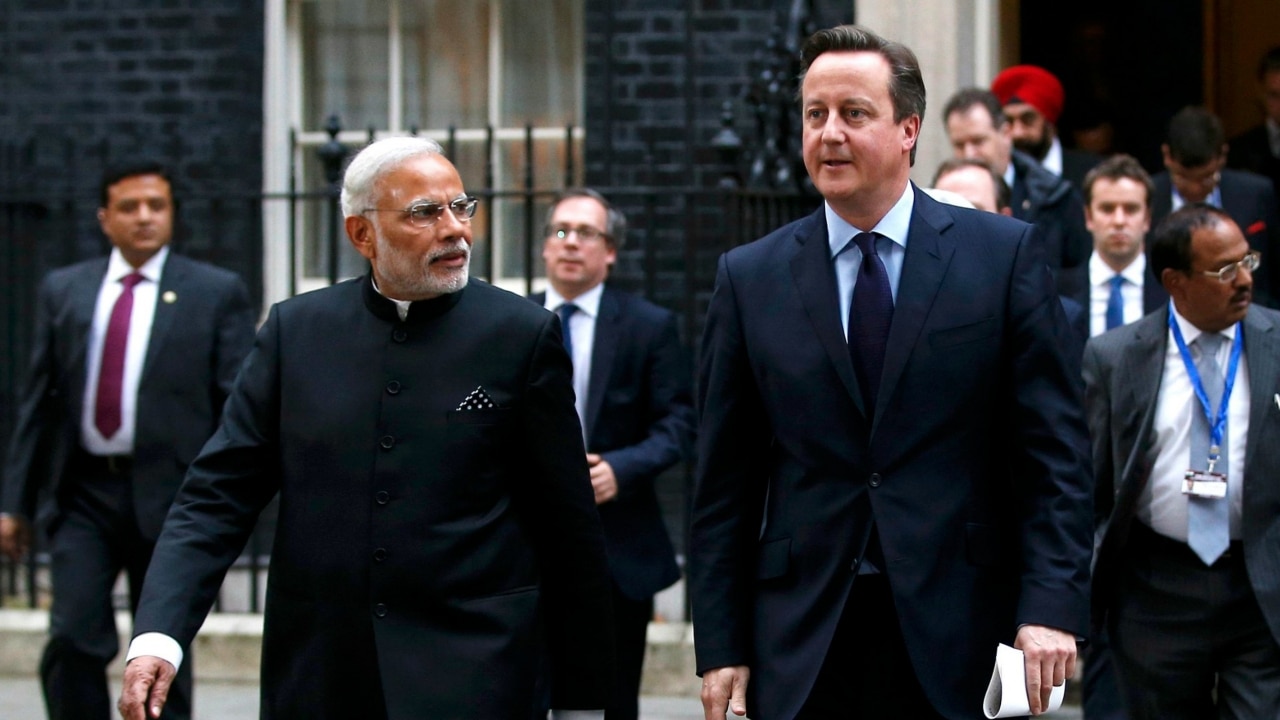
On the eve of his three-day UK visit starting 12 November this year, the first by an Indian PM since 2006, Prime Minister Narendra Modi said, "We have traditionally been cooperating extensively on defence and security issues and this visit will build on strong ties. Defence manufacturing will be a prime focus in my talks".
India and Britain are leading investors in each other's countries, with UK's foreign direct investment in the country being around $22 billion between the years 2000 and 2015 - which is 9% of all FDI in India. In the last five years, Cameron has visited India thrice, mainly to boost trade ties. After the Vodafone issue, there will be a push on tax predictability and transparency. Modi’s visit comes just after Chinese President Xi Jinping’s visit and may invite comparisons. However, the UK is already the largest investor in India and India has the advantage of 1.5 million - the largest and very visible diaspora in the UK. As of 2014, Indian companies in the UK generated over 19 billion pounds. Also, they have reportedly employed more than 100,000 people in the UK. Indians invest more in Britain than in the rest of European Union combined.
The Indian Armed Forces inherited the traditions and equipment when the British left India in 1947. Earlier, 1.3 million Indian soldiers fought in World War I along with British, of which 74,187 were killed; while 87,000 Indian soldiers died in World War II. The Indian Army basically inherited the artillery guns and small arms. The Indian Navy on the other hand, received a few ships and later acquired the Royal Navy Hercules and refurbished it into its first aircraft-carrier Vikrant. The most significant Indo-British defence relations have been in aviation.
De Havilland Vampire was the first jet aircraft inducted into the Indian Air Force (IAF) in 1949. Later, 107 English Electric Canberra bombers and Photo Recce variants were joined, starting 1957. The light-weight fighter Folland Gnatwas was operational in the IAF from 1958 to 1978. Later, over 175 were license-produced by Hindustan Aeronautics Ltd (HAL). They played a stellar role in the 1965 and 1971 wars and were christened ‘sabre-slayers’. The famous Keelor brothers and the IAF’s first and only Param Vir Chakra Nirmaljit Singh Sekhon earned their name and valour on this aircraft.
Then Hawker Hunter aircrafts were inducted to counter the Sabre F-86 purchased by the Pakistan Air Force. Hunters played a stellar role in the classic anti-tank battle of Longewala in the 1971 war which is part of military aviation folklore. IAF’s first nine-aircraft formation aerobatics team ‘Thunder Bolts’ was formed with this aircraft in 1982.
The nuclear capable SEPECAT Jaguar, deep-strike-ground-attack aircraft from BAE Systems entered service in 1979. License-produced in India by HAL, IAF still flies 125 aircrafts in 5 squadrons. Also, 89 Hawker Siddley HS-748 medium turboprop aircraft were license-produced in India by HAL, including 17 for Indian Airlines. BAE Systems Hawk Mk 132, single-engine advanced jet trainer is used for training and low cost combat and reconnaissance roles. Nearly 125 have been ordered by the IAF and Indian Navy. Twenty additional are under contracting for the IAF’s Aerobatics team and may be signed during this visit.
The Indian Navy earlier operated the anti-submarine Westland Sea King helicopters and flies the jump-jet Sea Harrier since 1979. A Defence Consultative Group (DCG) was set-up in 1995. India and the UK hold regular joint military exercises since March 2005. The British Royal Air Force (RAF) and IAF conduct Exercise Indradanush on alternate years. The last was held in July 2015 in the UK and saw IAF Su-30MKI fighters training with RAF Typhoon FGR4.
BAE Systems is the largest defence contractor in Europe and one of the biggest defence companies in the world. Bae-HAL is a joint venture of BAE Systems, UK and India’s HAL and delivers world-class IT solutions for clients across the world. The Hawk trainers are planned to be upgraded for combat-role with air-to-air missiles and a range of smart weapons; and BAE Systems is a contender. The IAF is also examining an offer by BAE Systems and Israel's Elbit to equip the Hawks with virtual training systems to simulate MiG-29s, Mirage-2000Hs and Su-30MKIs - the platforms to which trainee fighter pilots graduate. The major defence companies we have dealt with in UK include BAE Systems, Rolls-Royce, Chemring, and Hawker Siddeley among others. Earlier, in 2012, BAE Typhoon lost the MMRCA competition to Dassault Rafale.
IAF’s Air Chief Marshal Arup Raha visited UK in September, 2014. Britain supports India’s case for permanent membership of the United Nations Security Council as well as bilateral cooperation in civilian nuclear technology. PM Modi should push for Make-in-India and woo defence companies to make India a defence production hub.
The author is a retired Air Marshal of the Indian Air Force.